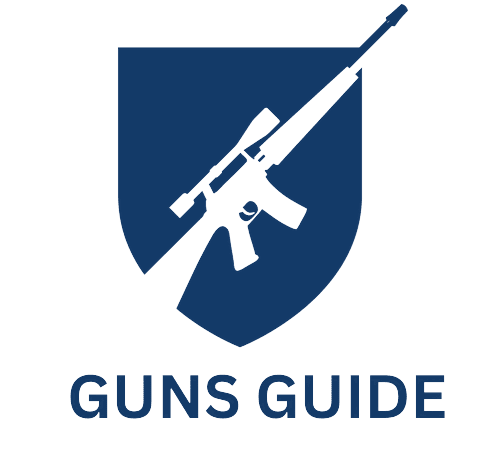Springfield Ronin is a popular and versatile red dot sight designed for various firearms. Developed by Springfield Armory, this sight has become highly popular among various firearm enthusiasts and professionals due to its compact size, extended battery life, and crisp 3 MOA red dot, making target acquisition quick and easy. However, like any other product, the Springfield Ronin sight comes with its own set of problems that can affect its performance and usability. In this comprehensive blog post, we will explore these issues in detail and provide potential solutions to address the Springfield Ronin problems.
Problem 1: Red Dot Flickers or Disappears
One of the most common issues reported by Springfield Ronin users is the red dot flickering or disappearing altogether during usage.
Causes
- Battery issues: Low or exhausted battery, improper battery installation, or poor battery contact.
- Loose mounting: The sight might not be properly mounted, causing a shift that results in flickering or disappearing dots.
- Internal issues: There could be defective electronic components or a software issue causing the red dot to malfunction.
Solutions
- Check the battery: Replace the battery with a fresh one, ensure proper installation, and clean the battery contacts if necessary.
- Tighten the mounting: Ensure that the sight is securely mounted to your firearm and that it does not move during operation.
- Contact Springfield Armory: If the problem persists despite addressing the above issues, the sight may have a defective component or require a software update. Contact Springfield Armory’s customer service for further assistance.
Problem 2: Elevation or Windage Adjustments Not Working
Some users have reported difficulty with elevation and windage adjustments on their Springfield Ronin sight.
Causes
- Improper adjustment: Users may not be following the correct adjustment procedures, resulting in ineffective adjustments.
- Loose hardware: The adjustment screws could be loose or damaged, preventing successful adjustments.
- Internal defects: There could be an issue with the internal components of the sight, affecting its targeting capabilities.
Solutions
- Follow adjustment procedures: Consult the user manual for the correct elevation and windage adjustment procedures. Ensure you are using the correct increments and directions when making adjustments.
- Inspect and tighten hardware: Check the sight’s adjustment screws for any signs of damage or looseness. Tighten the screws if necessary, or replace them if damaged.
- Contact Springfield Armory: If the problems persist after addressing the above issues, the sight may have an internal defect that requires professional attention. Contact Springfield Armory’s customer service for assistance.
Problem 3: Inconsistent Zeroing
Inconsistent zeroing can be a frustrating issue for Springfield Ronin users, as it affects the sight’s accuracy and targeting capabilities.
Causes
- Loose mounting: The sight may not be securely mounted, causing it to shift after each shot and lose its zeroing.
- Improper shooting techniques: Inconsistent shooting techniques may lead to poor zeroing results as well.
- Quality of ammunition: In some cases, using low-quality ammunition can lead to inconsistencies in zeroing.
Solutions
- Secure mounting: Make sure that the sight is properly mounted to your firearm and tighten all screws.
- Practice shooting techniques: Ensure that you are employing proper shooting techniques, including a steady grip and consistent trigger control. Practicing with a consistent shooting technique will help maintain a consistent zero.
- Use quality ammunition: Choose high-quality ammunition for your firearm to ensure more consistent results when zeroing in your sight.
Problem 4: Difficulty in Low Light Conditions
Some users experience difficulty in using the Springfield Ronin sight in low light conditions.
Causes
- Brightness settings: The sight’s current brightness setting may be too low or too high for the lighting conditions, making it difficult to see the red dot.
- Environment: The ambient lighting conditions may be affecting the sight’s visibility.
Solutions
- Adjust brightness settings: Adjust the sight’s brightness settings according to the current lighting condition to ensure a clear and visible red dot.
- Improve lighting: If possible, try to improve the ambient lighting in the area to make it easier to see the red dot.
Problem 5: Short Battery Life
Springfield Ronin is designed for extended battery life, but some users have reported shorter than expected battery life in their sights.
Causes
- High brightness settings: Constantly using the sight on high brightness settings can drain the battery faster.
- Old or low-quality batteries: The choice of battery could be affecting the battery life.
Solutions
- Optimize brightness settings: Adjust the brightness settings according to your needs, and minimize the usage of the sight on high brightness settings.
- Use high-quality batteries: Choose quality, long-lasting batteries for your Springfield Ronin sight to ensure the best possible battery life.
To summarize, the Springfield Ronin sight is a versatile and user-friendly product but may have some issues like any other product in the market. Addressing these issues can help improve your sight’s performance and ensure a satisfactory experience. Always consult your user manual and follow proper maintenance procedures to keep your Springfield Ronin sight in optimal condition. If any issues persist despite your efforts, do not hesitate to contact Springfield Armory’s customer support for assistance and advice.
Frequently Asked Questions:
1. How much does a Springfield Ronin weigh?
The weight of the Springfield Ronin varies depending on the model. The Ronin 45 ACP model weighs 34 ounces unloaded, while the 9mm model weighs 31 ounces.
2. What is the difference between Springfield EMP and EMP Ronin?
The main difference between the Springfield EMP and EMP Ronin is the size. The EMP is a compact handgun with a 4-inch barrel, while the EMP Ronin has a full-size frame and a 4.25-inch barrel. The EMP Ronin also has a thicker grip and a different slide finish than the EMP.
3. Where are Springfield Ronins made?
The Springfield Ronin is made in Geneseo, Illinois, USA.
4. How accurate is a Springfield 1911?
The accuracy of a Springfield 1911 depends on various factors such as the shooter’s skill level, ammunition quality, and the condition of the gun. However, Springfield 1911s are known for their excellent accuracy due to their high-quality components and tight tolerances.
5. What kind of problems can occur with a Springfield Ronin?
Some common problems that owners report with Springfield Ronin include failure to fire, feeding issues, and ejection problems. These problems can be resolved by cleaning the gun regularly and using high-quality ammunition.
6. How do I clean my Springfield Ronin?
You can clean your Springfield Ronin by disassembling it and using a gun cleaning kit. Make sure to follow the manufacturer’s instructions and use a cleaning solvent appropriate for your gun.
7. How often should I clean my Springfield Ronin?
You should clean your Springfield Ronin after each use to ensure optimal performance. Regular cleaning can also prevent buildup and corrosion that can damage your gun.
8. Does Springfield offer a warranty on the Ronin?
Yes, Springfield offers a limited lifetime warranty on the Ronin. The warranty covers defects in materials and workmanship and is transferable to subsequent owners.
9. Can I customize my Springfield Ronin?
Yes, there are many aftermarket parts and accessories available for the Springfield Ronin, allowing you to customize it to your preferences and needs.
10. How many rounds can the Springfield Ronin hold?
The Springfield Ronin comes in both 9mm and 45 ACP calibers. The 9mm model has a capacity of 9+1 rounds, while the 45 ACP model has a capacity of 8+1 rounds.

